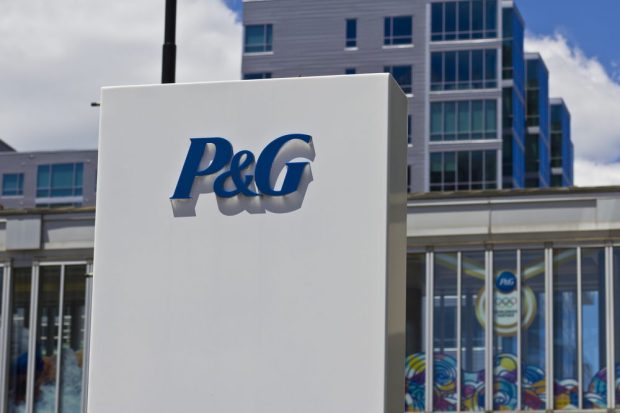Procter & Gamble Sees No Shift in Consumers’ Private Label Trade-Down

Consumer packaged goods giant Procter & Gamble said it has no plans to change strategy as it continues to work through a difficult cost and operating environment.
This, as the Cincinnati-based maker of Tide, Bounty, Pampers, Gillette and dozens of other household brands told investors its fiscal second quarter organic sales grew 5% for the three months ending Dec. 31 and that the belt-tightening changes adopted by many consumers had stabilized.
“If you look back over the past six months, private label’s share in the U.S. has been relatively steady,” P&G CFO Andre Schulten told investors on the company’s earnings call Thursday (Jan. 19). “There hasn’t been a significant shift in consumer behavior in terms of trade down,” he added.
While he said that share had initially risen by roughly one-quarter of a percent, the lower-priced store brand products had not put much of a dent in P&G’s business.
“[Private label share] is a metric we’re watching closely, but if you look at sequential share, and absolute share of private label, it continues to hover around 16% at three, six, and even twelve months,” Schulten said.
“Our strategy isn’t shifting and I don’t see the market shifting significantly,” he added before adding the cautionary caveat that no one knows what the next six months will bring. “But if past behavior over the last six months, nine months is any indication, I think the consumer is relatively steady in the U.S., which gives us great confidence.
Pain is Universal
While the impact of foreign exchange, acquisitions and divestitures saw P&G’s net sales decline 1% for the period, the rebound in its Fabric Care and Family Care segments saw it gaining share and building momentum.
“Don’t forget, our retail partners are the owners of the private label brands that we compete against and they’re facing many of the same dynamics in terms of their cost inputs that we are,” CEO Jon Moeller told investors, confirming that buying habits of biggest customers and ongoing fluctuation of inventory drivers had not changed and would not affect its long-standing business relationships.
“I don’t see anything in my interactions with our retail partners that causes an inflection of that discussion in the near term,” Moeller added.
In addition to raising its sales forecast and keeping its earnings guidance for its fiscal year that ends June 30, P&G also pointed to outsized 8% organic sales growth in its healthcare unit, which includes the Crest, Oral-B and Pepto Bismol brands.
While China is projected to deliver a slow but highly unpredictable recovery, the U.S. — P&G’s largest market — is expected to lead the way.
“We continue to expect more volatility in costs, currencies and consumer dynamics as we move through the second half of the fiscal year,” Schulten said. “However, we think the strategies we’ve chosen, the investment we’ve made to focus on executional excellence, have positioned us well to manage through this volatility over time.”
As much as P&G is confident in its outlook and ability to use product innovation to drive demand for its premium brands and support pricing, it also stresses that it is not immune from a long list of challenges facing it and its vendors, suppliers and competitors.
And while it continues to face high year-over-year commodity and transportation cost inflation, as well as ongoing foreign exchange, geopolitical issues, COVID disruptions and historically high inflation that is impacting consumers, the 180-year-old brand was confident in its ability to navigate these macroeconomic challenges, just as it has in the past.
“We believe it’s a rough patch to grow through, not a reason to reduce investment in the long-term health of the business,” Schulten said.
For all PYMNTS retail coverage, subscribe to the daily Retail Newsletter.
